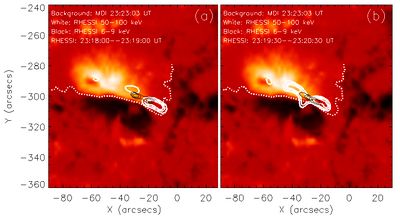Radiative and Conductive cooling is studied in the solar flare observed by RHESSI on 2005 September 13. With high spectral and time resolutions, RHESSI gives us the opportunity to detect the time evolution of the flare thermal (such as temperature and emission measure) and nonthermal (i.e. spectral index and lower cut-off) parameters from the observations. Meanwhile, the radiative and conductive loss energies can also be estimated from the RHESSI observations after the flare onset. Consistent with previous findings, the cooling is increased with the time, especially the radiation becomes remarkable on the later phase of flare. According to our method, about half of thermal energy is traced by RHESSI soft X-rays, while the other half is lost by the radiative (∼38%) and conductive (∼9%) cooling at end of the hard X-rays in this event. The nonthermal power (inferred from RHESSI hard X-ray spectrum) is not well correlated with the derivative of thermal energy (required to radiate the RHESSI soft X-ray flux and spectrum) alone. However, after consideration the radiation and conduction, a high correlation is obtained between the derivative of total thermal energy,and nonthermal power from the flare start to end, indicating that the Nupert effect works very well in this flare.

(by NING Zongjun)
Figure SOHO/MDI magnetograms with RHESSIX-ray contour at 23:18:00 UT (a) and 23:19:30 UT (b). The contour levels are set at 70%, 80% and 90 % for 6-9 keV (black) and 40%, 60% and 80% for 50-100 keV (white). The white dotted line represents the magnetic neutral line.
The study has been adopted byASTROPHYSICS AND SPACE SCIENCE ,2012, Vol. 338 No. 1 pp.15-21 http://www.springerlink.com/content/50n6v1282723r7n2/ |
